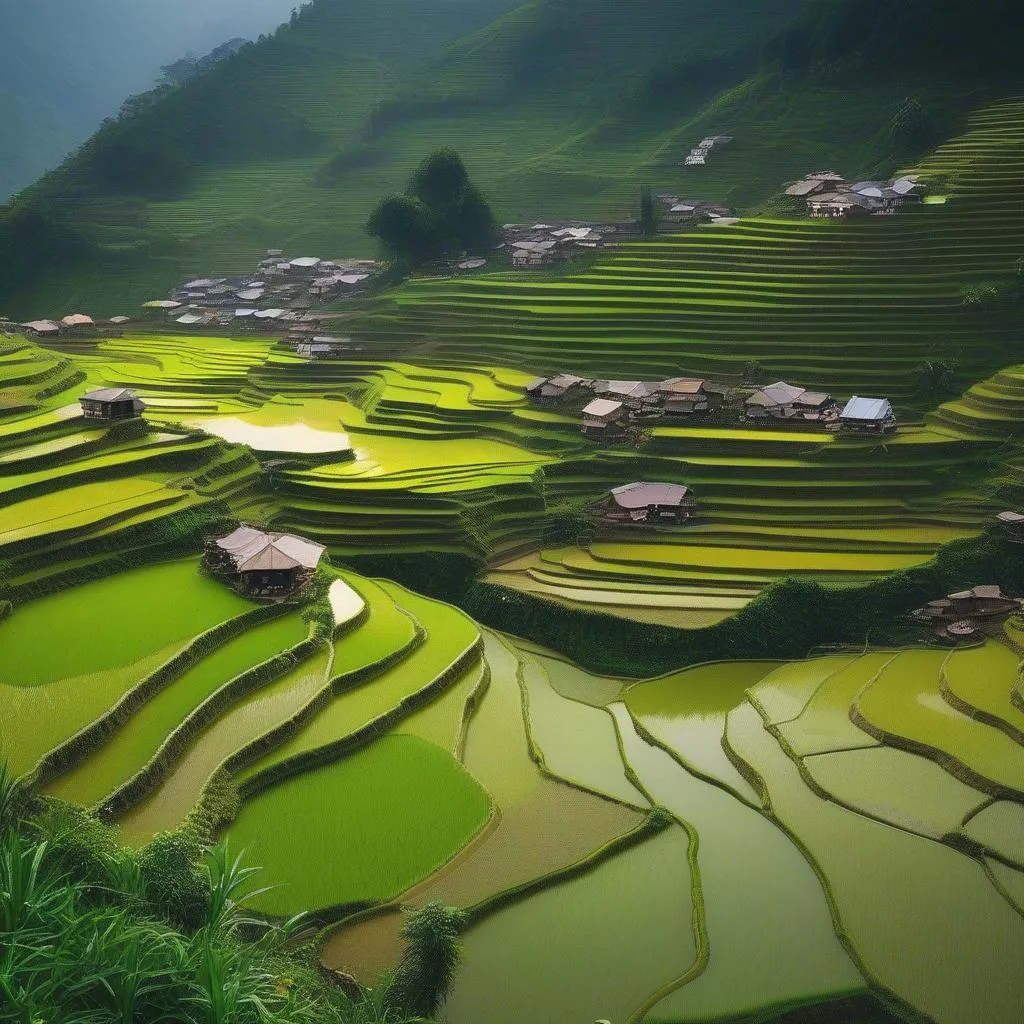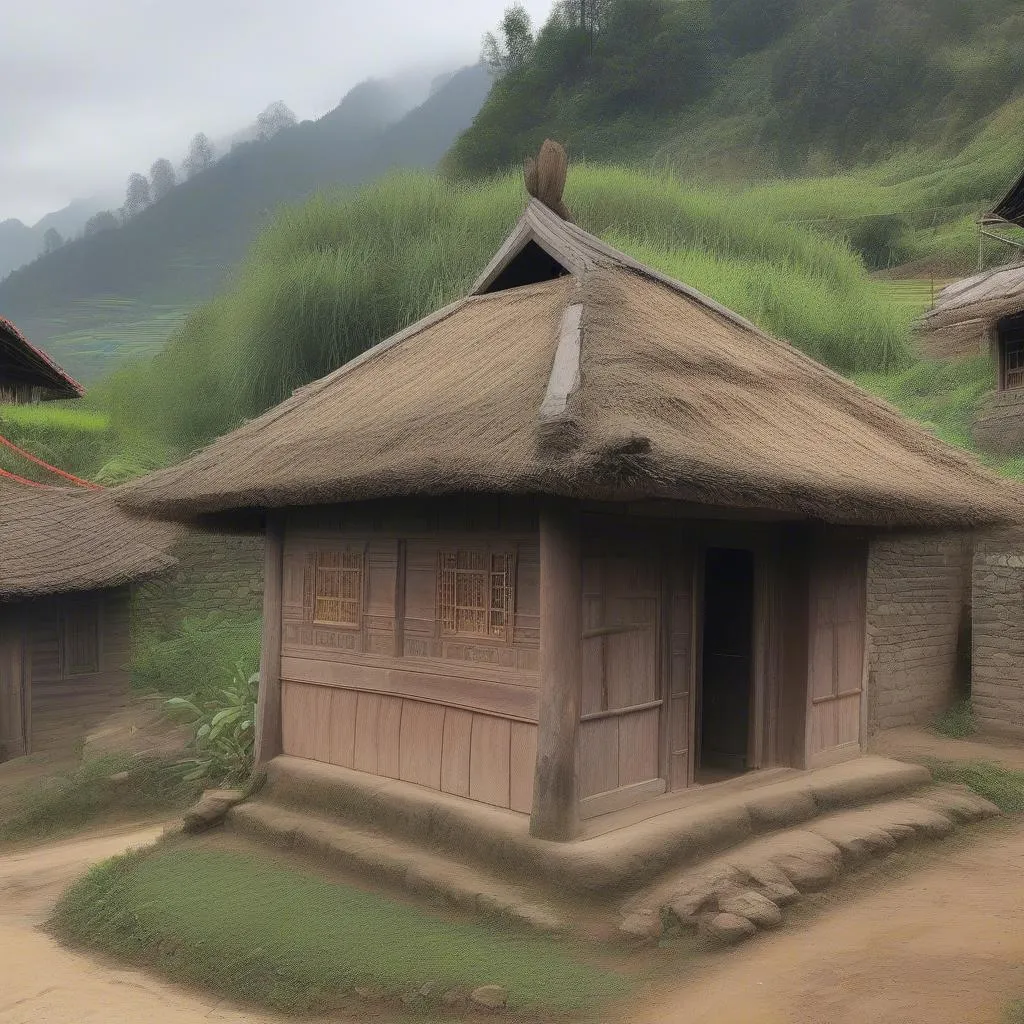“Wanderlust: a strong desire or impulse to wander or travel and explore the world.” Does that sound familiar? If you’re drawn to the breathtaking landscapes of Vietnam, a visit to Sapa should be at the top of your list. This mountainous region in Northwest Vietnam is famous for its terraced rice fields, majestic Fansipan peak, and the vibrant culture of local hill tribes. To make the most of your journey, you need a trusted companion – a comprehensive Sapa tourist map.
Navigate Sapa Like a Pro: Your Essential Tourist Map
Imagine yourself trekking through verdant valleys, the scent of fresh mountain air filling your lungs, and the sound of cascading waterfalls serenading your every step. That’s the magic of Sapa, and a tourist map is your key to unlocking these hidden gems.
Whether you’re an adventure enthusiast looking to conquer Mount Fansipan or a culture vulture eager to interact with the Hmong and Dao people, a map helps you piece together your itinerary. It will pinpoint your location, guide you towards must-visit attractions, and even lead you off the beaten path to discover hidden treasures.
Sapa Tourist Map: Your Gateway to Unforgettable Experiences
1. Unveiling Sapa’s Treasures: Points of Interest
- Fansipan Peak (3,143 meters): The “Rooftop of Indochina” offers breathtaking views and a challenging yet rewarding climb.
- Sapa Town: A charming town with colonial architecture, bustling markets, and delicious local cuisine.
- Cat Cat Village: Home to the Black Hmong people, known for their indigo-dyed clothing and traditional crafts.
- Ta Phin Village: Experience the Red Dao culture, renowned for their herbal baths and intricate embroidery.
- Muong Hoa Valley: Hike through lush rice paddies, encounter local farmers, and marvel at the stunning natural beauty.
2. Planning Your Sapa Adventure: A Guide
- Best Time to Visit: September to November or March to May offers pleasant weather and clear skies for trekking and sightseeing.
- Getting There: Overnight trains or buses from Hanoi are popular options, with scenic routes through the mountains.
- Getting Around: Sapa Town is walkable, but hiring a motorbike or taking a taxi is recommended for exploring surrounding villages.
3. Making Memories in Sapa: Things to Do
- Trekking and Hiking: Embark on unforgettable treks through rice terraces, bamboo forests, and minority villages.
- Homestay Experience: Immerse yourself in local life by staying with a Hmong or Dao family in their traditional homes.
- Sapa Market: Shop for handicrafts, local produce, and unique souvenirs at the vibrant Sapa Market.
- Silver Waterfall and Love Waterfall: Witness the beauty of these cascading waterfalls, surrounded by lush greenery.
4. Savoring Sapa’s Flavors: Food and Drink
- Thang Co: A hearty Hmong soup made with horse meat, spices, and vegetables.
- Com Lam: Bamboo sticky rice cooked over an open fire, a popular local snack.
- Salmon in Sapa: Surprisingly, Sapa is known for its fresh salmon, often served grilled or steamed.
- Local Wine: Try the rice wine, often infused with fruits or herbs, for a taste of local culture.
5. Essential Tips for Your Sapa Journey
- Pack for all weather conditions: Sapa’s weather can be unpredictable, so layers are essential.
- Respect local customs: Dress modestly when visiting villages and ask permission before taking photos of people.
- Bargain respectfully: Negotiating prices is common in markets, but do so with a smile.
- Learn basic Vietnamese phrases: While English is spoken in tourist areas, knowing some basic phrases will enhance your interactions.
 Rice Terraces Sapa
Rice Terraces Sapa
 Fansipan Peak Sapa
Fansipan Peak Sapa
 Sapa Homestay
Sapa Homestay
